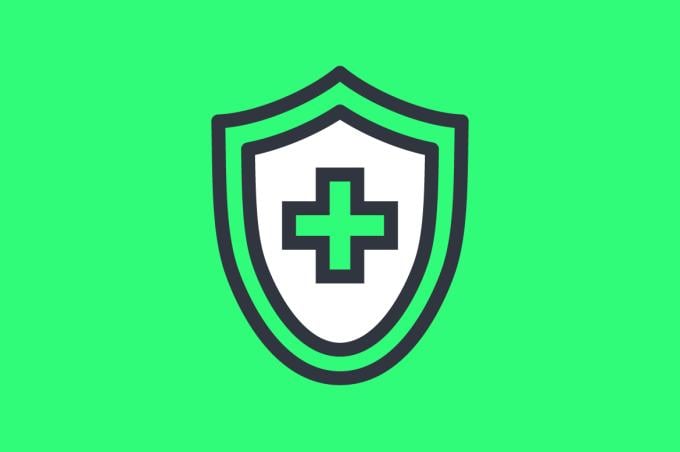Early detection is one of the most effective tools patients and physicians have to fight cancer. But routine screenings, the vast majority of which are negative, can lead to stress and anxiety as patients wait for the results of their test.
Physicians with the Mid-Atlantic Permanente Medical Group, however, have developed a system where results for breast cancer screenings are processed and communicated swiftly. If follow-up tests are needed, they are scheduled immediately and can even be done that day.
“I know firsthand how this can be a very scary disease,” said Bruce Wollman, MD, a radiologist with the Mid-Atlantic Permanente Medical Group based in Rockville, Maryland.
“Women worried about breast cancer might literally have sleepless nights worrying about it,” said Dr. Wollman, whose mother died of breast cancer. “We worked to figure out what can we do to decrease the number of sleepless nights for our patients who might be fearful of the disease.”
Because of a program Dr. Wollman and his teams designed, more than 90% of Mid-Atlantic Permanente Medical Group patients get their screening mammography results in less than 30 minutes from the completion of the mammogram, with an average time of 12.8 minutes.
Times differ for receiving mammography results from a routine screening compared with a diagnostic test prompted by finding a lump during a self-exam. However, according to the Susan G. Komen organization, after a screening, a wait of up to two weeks can be expected—and by federal law is allowed to be up to 30 days.
Dr. Wollman is the associate medical director for government relations, radiation oncology, pharmacy and pathology for Mid-Atlantic Permanente Medical Group, which has more than 1,700 physicians caring for more than 825,000 Kaiser Permanente members in Maryland, Virginia and Washington, D.C.
Mid-Atlantic Permanente Medical Group is a member of the AMA Health System Program, which provides enterprise solutions to equip leadership, physicians and care teams with resources to help drive the future of medicine.
Dr. Wollman is a third-generation physician and a second-generation Permanente doctor, following his father who was a Permanente urologist in San Diego.
He recently spoke with the AMA about putting the systems in place to provide patients with quick results for their mammography screenings.
AMA: How did this program come together and how were you able to break down the silos that are frequently a barrier to such collaboration?
Dr. Wollman: This wasn't a snap your fingers and, overnight, it happened type of thing. It was over several years that these changes took place, because the diagnosis of breast cancer is a very long, multistep process. It's not: Do a screening mammogram and then you've got your diagnosis.” The process has several steps and each step, has—historically—its own reasons for why it takes so long. So each step required a different solution to be put in place.
I was fortunate in that, at that time, our regional radiology and pathology departments both reported up to me. So, I did have control over the physician components of pretty much every step of the way. That allowed us to go forward with something that was a very personal issue for me.
It's not just reading the mammogram or the pathology slide accurately. If we can read it accurately and give the woman her results much sooner, we know it's going to be better for her. And clearly, everybody wanted the same thing. So it was very easy to get on the same page with all the physicians for, not only providing the right diagnosis, but systematically providing it expeditiously.
It's not just making people work harder or work faster. It's putting the systems in place that enable the physicians to do the right thing at the right point in time.
The average wait time for screening mammography results is currently 12.8 minutes. Of course, the tests for breast cancer diagnosis is several steps—the screening, the recall, the biopsy. What we've done is that, given most screening mammography is negative, the vast majority of women will have zero sleepless nights in this process.
It's not just the physicians working, it's also the IT.
When a radiologist will see the mammogram and call it negative in a matter of minutes, we have a system in place where—through the electronic medical record, if the woman is registered on our KP.org system—by the time she gets to the parking lot, she will get an email saying, “Your results are ready.”
And she can sit in her car, open up the app on her smartphone and there's her mammogram results.
Back in the old days, we had to have somebody print out the results, get an envelope, stick a stamp on it, put it in the mail and hope the USPS [U.S. Postal Service] does its thing. That took days by design.
But we've used every tool at our disposal to really make this much more expeditious.
AMA: What happens when results are positive? Who answers the patient's questions and explains the next steps?
Dr. Wollman: The first step leading to recall is standard verbiage that basically says, ‘We see something questionable. We want you to come back.’ Usually, that doesn't raise too many issues, but if the patient does have questions at that point, it’s recommended that she contact her primary care physician.
At the recall, when the ultrasound or the second mammogram is done, if there is something suspicious she has a real-time conversation with the radiologist who explains, ‘We see this over here,’ I’m recommending a biopsy for it.”
After the biopsy, her radiology physician then says, ‘I took a piece of tissue out and we are going to send it to pathology to look at it under a microscope. I will personally be calling you tomorrow, and we can discuss next steps at that point in time.’
After that conversation, if results are positive for cancer then they hand it over to our dedicated breast cancer-tracking system with nurses who specialize in these cases.
AMA: As an integrated health system with a health plan, you don’t have to worry about prior authorization. How has that affected this program?
Dr. Wollman: Every American is allowed to get a screening mammogram. Where the benefit is in our integrated health care delivery system is the next steps.
In the community, a doctor is able to order a screening mammogram, no problem. But if it shows the need for a recall mammogram or other imaging that often requires a separate order from the physician and the “Mother, May I” from the insurance company.
Similarly, if that recall shows something suspicious requiring a biopsy, that also may require an additional order and the “Mother, May I” from the insurance company. And because we don't have that, our doctors don't just order a screening mammogram, they simply place a single conditional order for the entire process: a screening mammogram, and if that's positive, a recall mammogram or breast ultrasound and, if that's positive, a breast biopsy.
With that one simple order at the time of screening all of that goes through automatically.
What that has enabled us to do is, if the woman goes back to her car and sees the screening came up positive and she needs a recall mammogram or an ultrasound, there's a number she can call and get that scheduled immediately. And then if that's positive, she'll talk to the radiology physician and they can schedule the biopsy right then and there.
We've had multiple cases where a woman has come in for a screening, seen her report in a matter of minutes, got her recall that day, and then a biopsy that day. Subsequently, the pathology comes back by 6 p.m. the following business day.
That is, after the biopsy she knows if she has cancer or doesn't with one sleepless night—no other healthcare system can provide that routinely for a large patient population.
It’s not that we're smarter than anybody else—or work harder. Our systems are in place that allow us to provide breast-cancer diagnosis with the absolute minimum of sleepless nights—by design.
AMA: Please tell us about your medical director for government relations role.
Dr. Wollman: The interesting thing about government relations compared to clinical operations is, in clinical operations, like in the breast-cancer screening program, every step you make moves things forward.
In government relations, half the time victory means stopping something that was bad—that is, the status quo is victory. That was something different for me to come to terms with.
AMA: How did your father’s position with Kaiser Permanente affect your career path and choices?
Dr. Wollman: I enjoyed seeing him go to the office, do good clinical work and come home. He didn't have to worry about billing or regulatory burdens. He was able to simply care for his patients during the day and come home in the evening.
His Permanente Medicine salary put food on my table as a kid, paid my way through college at Stanford and medical school at the University of California San Diego. And I knew what I wanted to do: I wanted to take care of patients like my father did.
The funny story is that I graduated from medical training June 30, 2002, and started at Permanente in Northern California July 1, 2002—the very next day. I love it. I love being able to take care of patients—both one at a time when I'm reading X-rays, as well as 825,000 at a time by putting systems and improvements in place that affect the care for everyone.





